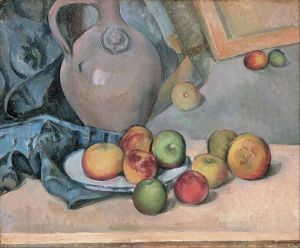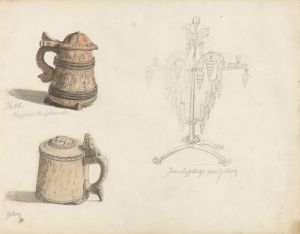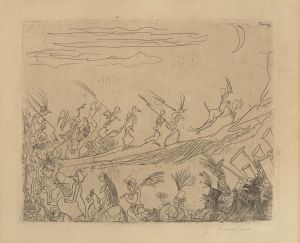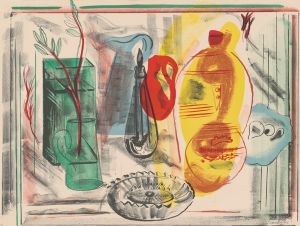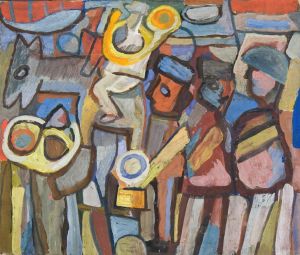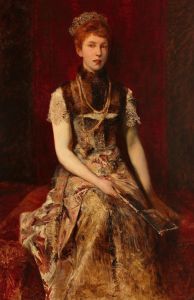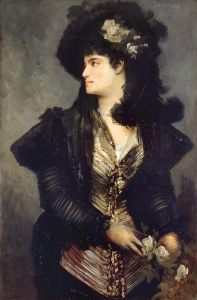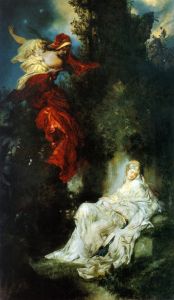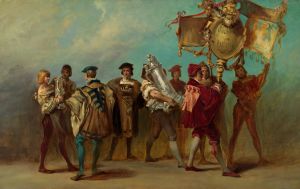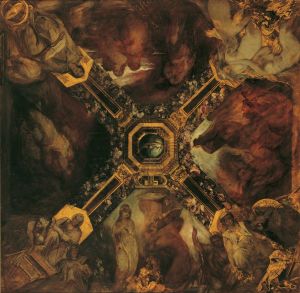
Entwurf zum Festzug 1879 – Die Hafner und Glaser
A hand-painted replica of Hans Makart’s masterpiece Entwurf zum Festzug 1879 – Die Hafner und Glaser, meticulously crafted by professional artists to capture the true essence of the original. Each piece is created with museum-quality canvas and rare mineral pigments, carefully painted by experienced artists with delicate brushstrokes and rich, layered colors to perfectly recreate the texture of the original artwork. Unlike machine-printed reproductions, this hand-painted version brings the painting to life, infused with the artist’s emotions and skill in every stroke. Whether for personal collection or home decoration, it instantly elevates the artistic atmosphere of any space.
Hans Makart, an Austrian painter renowned for his historical and allegorical works, created "Entwurf zum Festzug 1879 – Die Hafner und Glaser" as part of a larger project celebrating the silver wedding anniversary of Emperor Franz Joseph I and Empress Elisabeth of Austria. This painting is one of the designs for the grand parade, known as the "Festzug," which took place in Vienna in 1879. The parade was a significant cultural event, showcasing the various trades and guilds of the Austro-Hungarian Empire, and Makart was commissioned to design the overall artistic concept.
Makart's work on the Festzug was a testament to his ability to blend historical themes with contemporary celebrations, reflecting the grandeur and opulence of the Austro-Hungarian Empire during the late 19th century. The painting "Die Hafner und Glaser" specifically highlights the potters and glaziers, two important trades within the empire. Makart's depiction of these tradesmen is characterized by his typical lavish style, with rich colors and dynamic compositions that bring a sense of movement and life to the scene.
The Festzug itself was a monumental event, involving thousands of participants and attracting a large audience. It was designed to not only celebrate the imperial couple but also to emphasize the unity and diversity of the empire's various regions and cultures. Makart's designs played a crucial role in this, as they visually represented the different guilds and their contributions to the empire's prosperity.
Hans Makart was a central figure in the Viennese art scene during his lifetime, and his involvement in the Festzug project further cemented his reputation as a leading artist of his era. His works are known for their theatricality and attention to detail, qualities that are evident in "Entwurf zum Festzug 1879 – Die Hafner und Glaser." The painting serves as a historical document, capturing the spirit of the time and the importance of the trades it represents.
Makart's influence extended beyond painting; he was also involved in interior design and stage design, contributing to the Gesamtkunstwerk, or "total work of art," approach that characterized the period. His ability to integrate various artistic disciplines is reflected in the Festzug project, where he combined elements of painting, costume design, and pageantry to create a cohesive and visually stunning celebration.
The legacy of Hans Makart and his work on the Festzug continues to be appreciated for its artistic merit and historical significance. His paintings, including "Die Hafner und Glaser," are studied for their contribution to the development of 19th-century art and their reflection of the cultural and social dynamics of the Austro-Hungarian Empire. Through his art, Makart provided a window into the past, capturing the essence of an era marked by both tradition and innovation.





